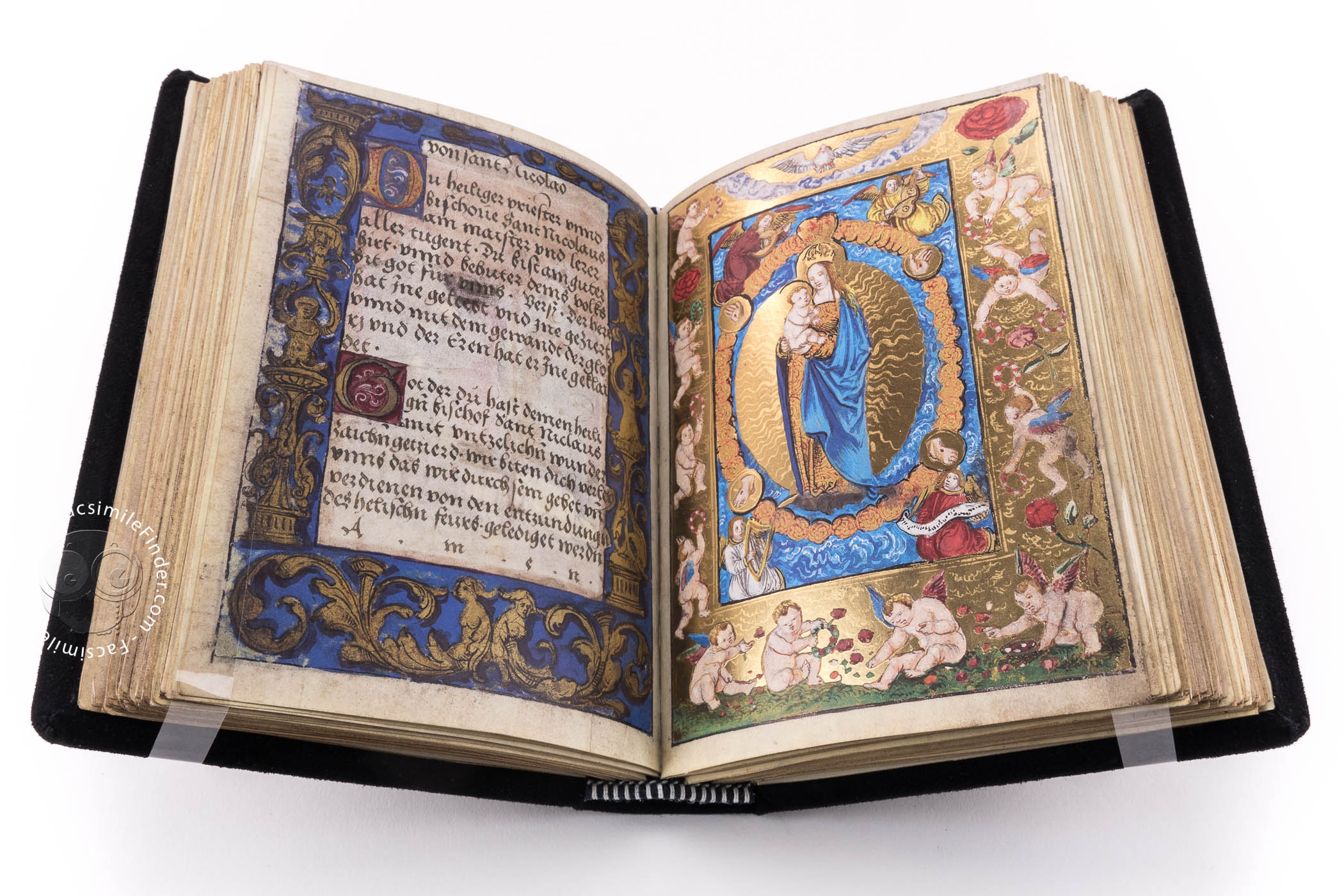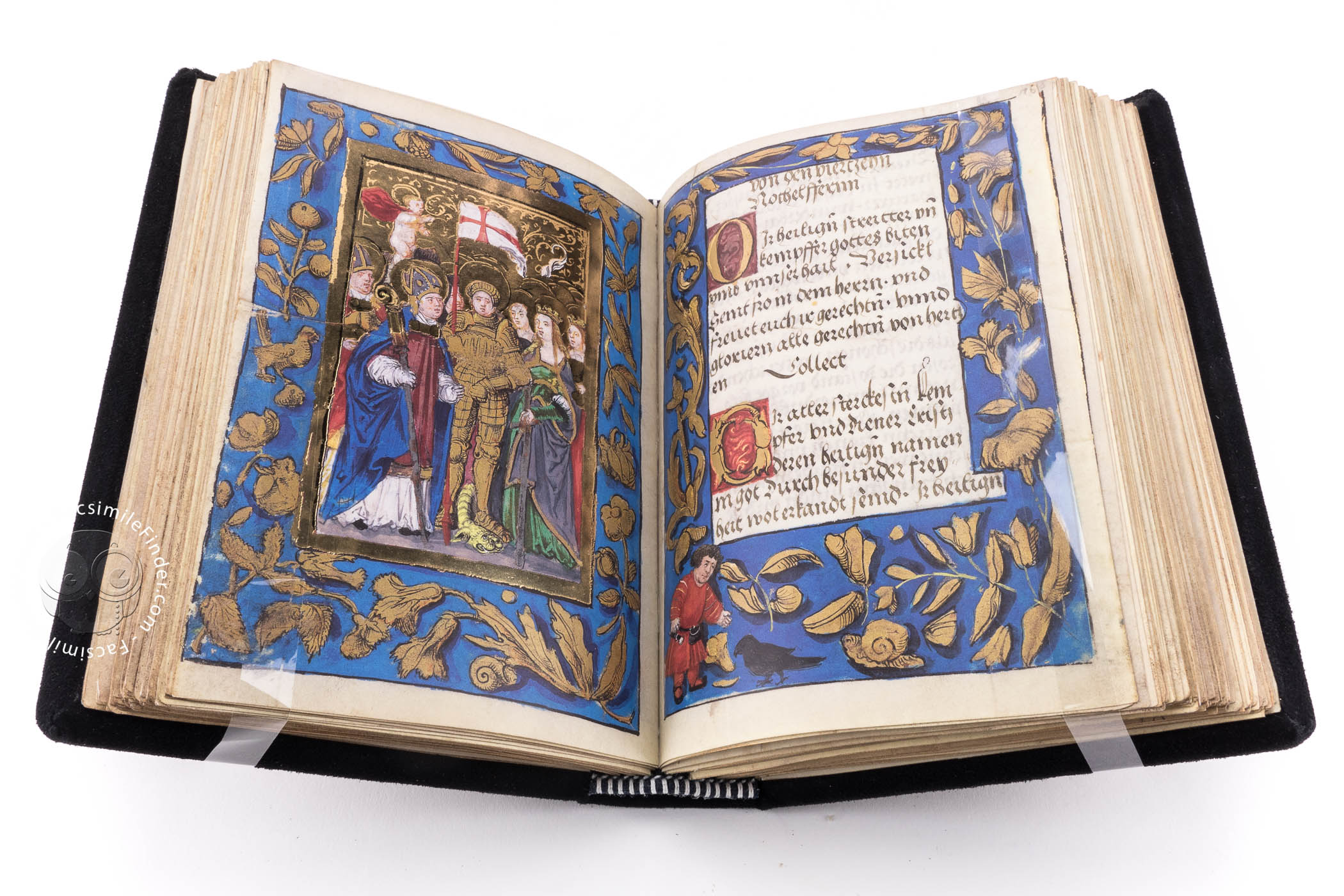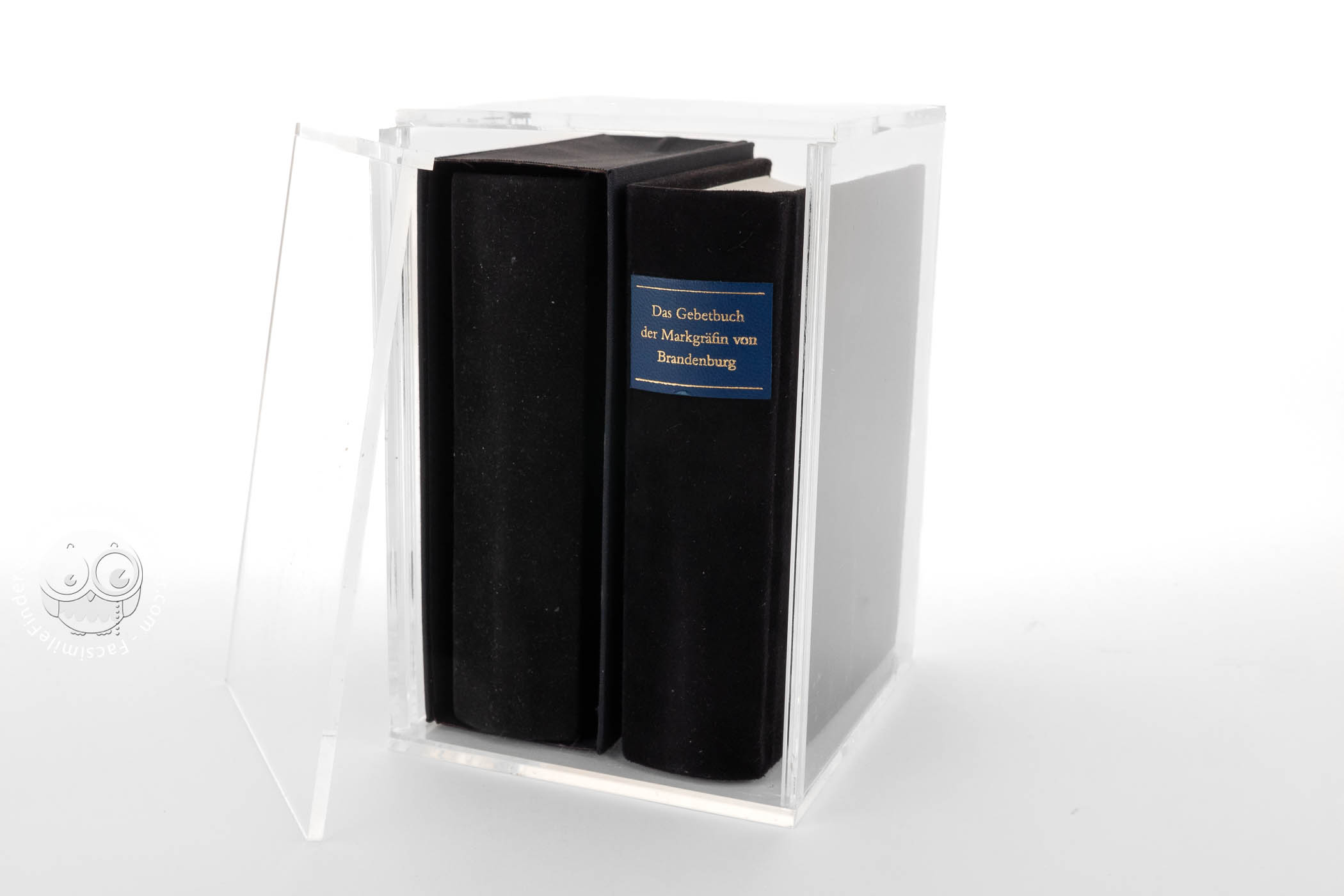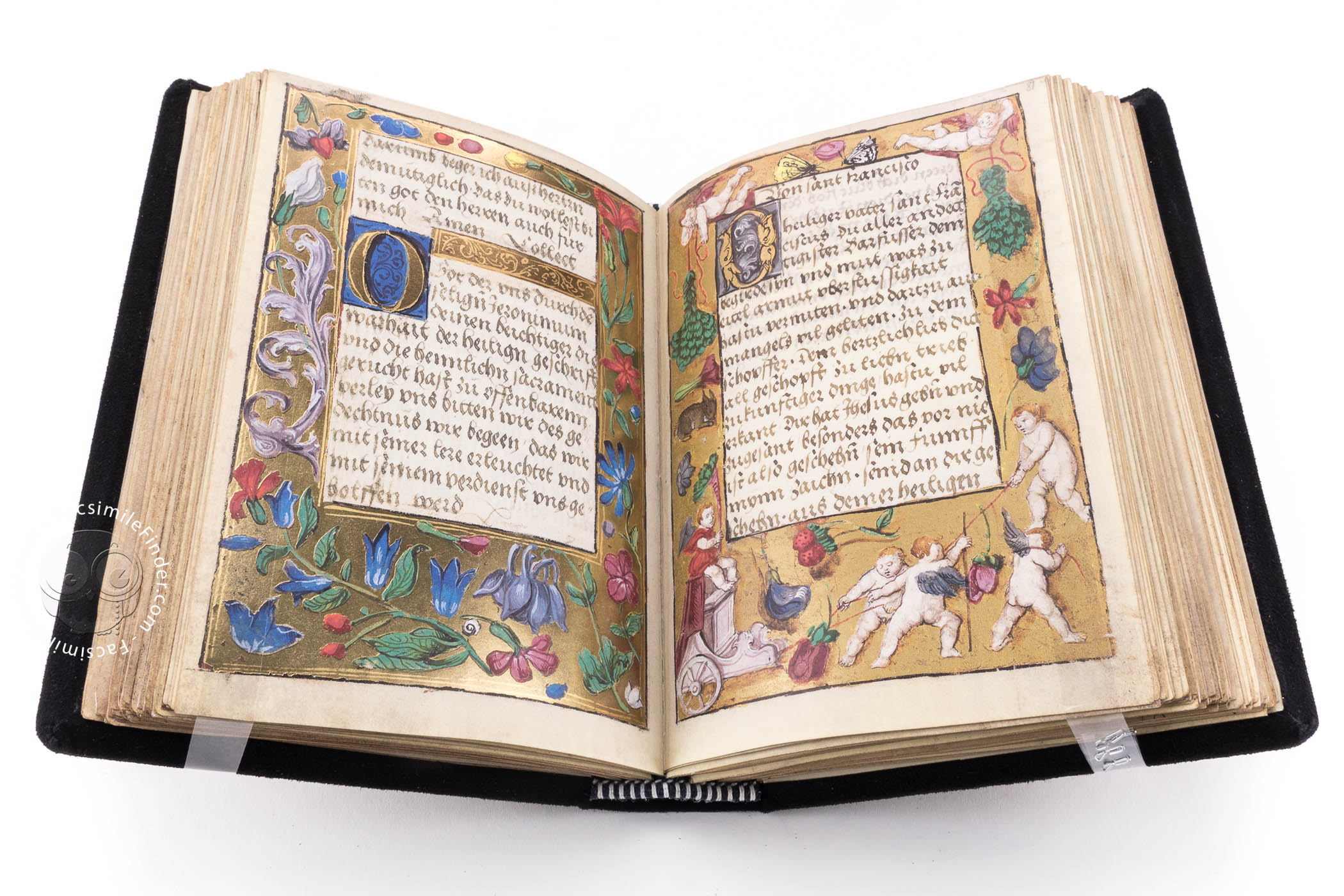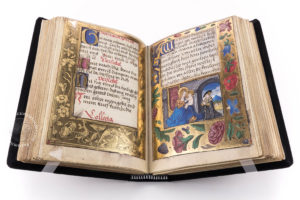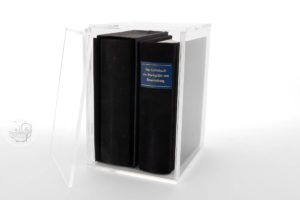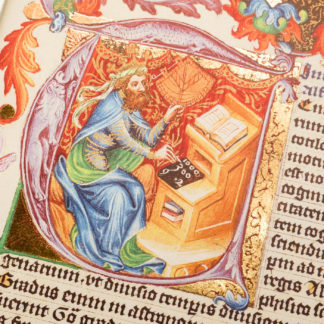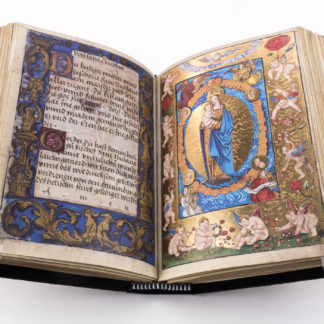Description
Extraordinary facsimile limited edition of the German Prayer Book of the Margravine of Brandenburg by Faksimile Verlag (2002) featuring:
- Edition details: Deutsches Gebetbuch der Markgräfin von Brandenburg – Lucerne: Faksimile Verlag, 2002
- Commentary: French and German by Merkl Ulrich, Obhof, Ute and Neidl Michaela (historical and codicological research with transcription of all the texts)
- Binding: four ornamental buttons each and a medallion laid in silver showing the Bavarian coat-of-arms decorate the front and back covers of the manuscript which has been bound in black velours leather
- Case: acrylic
About the original manuscript: Badische Landesbibliothek, Hs. Durlach 2
In the year 1520, in the middle of the turbulent times of Renaissance and Humanism, an ornate, yet highly intimate prayer book in the German language was produced in Augsburg. The town, then under the Fugger dynasty, was not only an important place of commerce and finance, but also one of the major centres of German book illumination.
The book was commissioned by Kasimir, Margrave of Brandenburg-Ansbach and his wife, Susanna of Bavaria, whose portraits and coats-of-arms both decorate the manuscript. Margravine Susanna was the niece of Emperor Maximilian, a generous patron of the arts throughout his life. He commissioned work from some of the greatest European painters, such as Dürer, Cranach and Holbein.
This extraordinary prayer book was presumably ordered on the occasion of the marriage celebrations for Kasimir and Susanna during the 1518 Imperial Diet at Augsburg where Emperor Maximilan himself gave away the bride.
Painted pages radiating with precious colors, opulent border decorations against a bright gold background and various ornamented initials in gold covering several lines against a red or blue background set ablaze a true firework display of gold and other colors on the 189 sheets of the book.
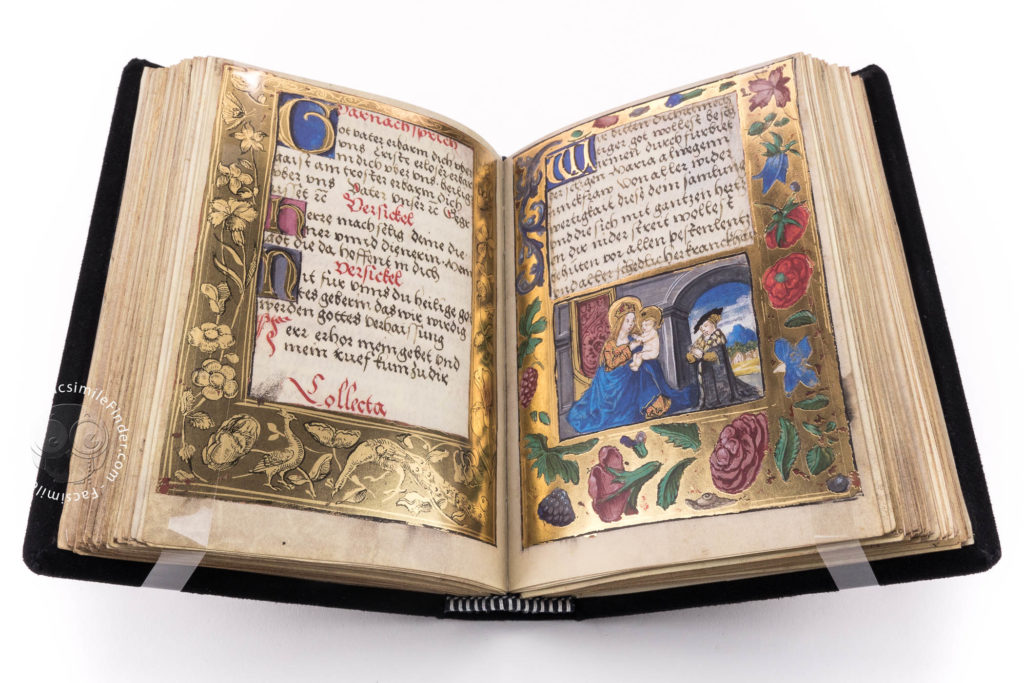
Narziss Renner: an artist between tradition and modernity
It is most likely that Susanna commissioned the Augsburg artist Narziss Renner with illuminating her prayer book on the occasion of her wedding. Renner must have caught the taste of the princess exactly; otherwise, how would she have entrusted an 18-year-old illuminator with the production of her personal book of prayer?
Her choice becomes understandable in view of the richness in ideas of Renner. The creative potential of the young artist is additionally emphasised by the highly independent reception of painted and printed models.
The use of well-known models was then widespread, but only few achieved the quality of the old masters, let alone surpassed them. Some of the miniatures in the Margravine’s prayer book can without any doubt be traced back to works of Burgkmair and Cranach.
Furthermore, we can clearly see Renner´s great affinity with the works of the Regensburg wood sculptor Albrecht Altdorfer. Renner studied this master of the Danube School to such a degree that on occasions he even outdid him in his dramatic reproduction of nature.
One special charm of the manuscript lies in the simultaneous use of differing kinds of borders; a total of 214 picture and text pages are framed by Flemish, Italian or German-inspired borders. Among them, the most frequently used is the Flemish border of scattered flowers.
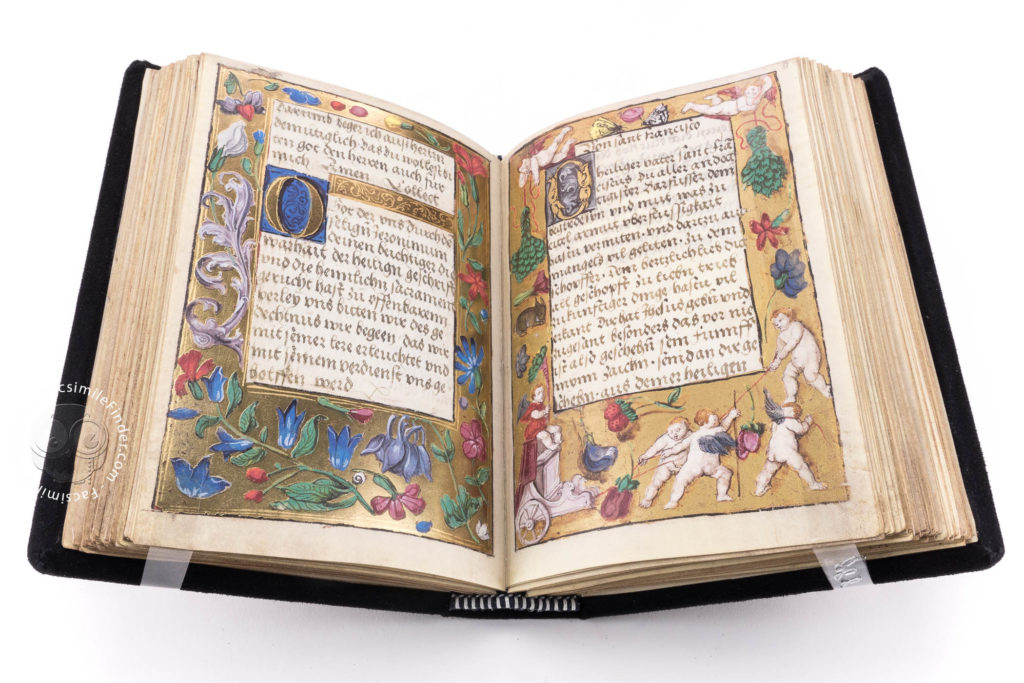
Get in touch with us for further information!
